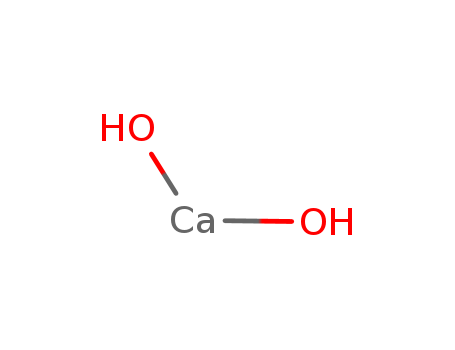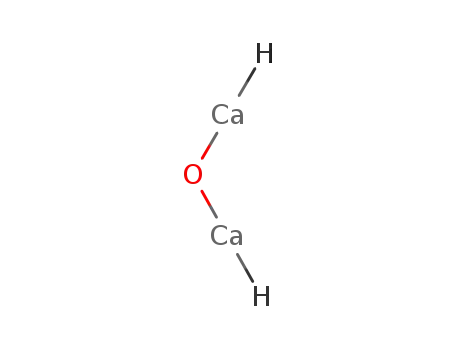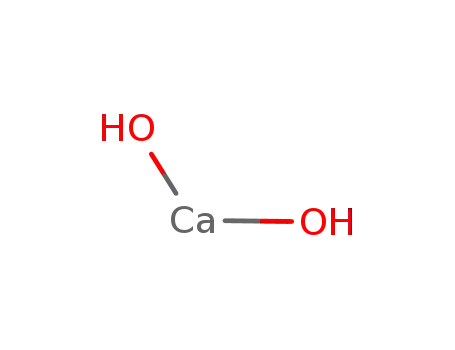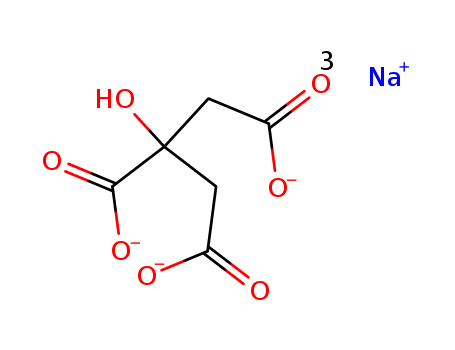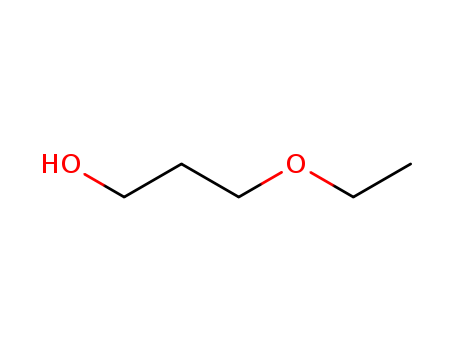|
Chemical properties
|
Calcium hydroxide is a soft white crystalline, odorless powder with an alkaline, bitter taste.
calcium hydroxide powder |
|
Uses
|
1. Calcium hydroxide Used for preparing bleaching powders, hard water softeners and the disinfecting and clarifying agents of tap water , as well as in building industry
2. Used for pharmacy. Used as rubber and oil industry additives. Used in lubricants for preventing coking, sludge deposition and anti-corrosion. Used as hard water softeners, disinfectants, antacids and so on.
3. Used as analytical reagents, carbon dioxide absorbents, as well as in organic synthesis
4. Used for making bleaching powder, hard water softener, depilatory, disinfectant, acid stop agent, astringent and various calcium salts.
5. Use for carbon dioxide examination and gas absorption. Used for leather hair removal, insecticide and water treatment. |
|
Solubility in water (g/100ml)
|
Dissolved grams in 100 ml of water at different temperatures (° C):
0.189 g/0°C; 0.182g/10°C; 0.173 g/20°C; 0.16 g/30°C; 0.141g /40℃
8.6 x 10-2g/80 °C; 7.6 x 10-2g/90 °C |
|
Identification test
|
Mix the sample with 3 to 4 times amount of water to form a uniform paste. Stand for clarification and the transent supernatant is alkaline for the litmus test.
Mix 1g of the sample with 20 ml of water, and add sufficient acetic acid to form solution. The calcium salt test (IT-10) is positive. |
|
Content analysis
|
Accurately weigh about 1.5g of sample into a beaker and then gradually add 30ml of dilute hydrochloric acid (TS-117). After the sample is fully dissolved, transfer the mixture into a 500ml volumetric flask. Flush the beaker and transfer the lotion into the volumetric flask too. Then dilute to the mark with water and mix fully. Take 50.0ml of the above solution into an appropriate container and add 50.0ml of water. Add in turn 30ml of 0.05ml/L disodium EDTA, 15ml of sodium hydroxide solution (TS-224) and 300mg hydroxynaphthol blue indicator with a 50ml burette under stirring (preferably with a magnetic stirrer), and then continue titrating to the blue end. Per mL of 0.05 ml/L of EDTA disodium corresponds to 3.705 mg of calcium hydroxide. |
|
Toxicity
|
ADI? no restricting (FAO/WHO, 2001).
LD50? 7300 mg/kg (mouse, oral).
Corrosive, weaker than lime.
GRAS (FDA, §182.1205, §184.1205, 2000).
The dust or suspension droplets of calcium hydroxide have a stimulating effect on the mucous membrane, which can cause sneezing and coughing. As alkali, it can also saponify the fat, absorb water from the skin, dissolve protein, as well as stimulate and corrode the organization. Moreover, the inhalation of lime dust may cause pneumonia.
The maximum allowable concentration of calcium hydroxide is 5 mg/m3. Once Inhaling dust, people can inhale water vapor, codeine and Judah auning, or paint mustard cream at the chest; when calcium hydroxide coming into the eyes, people should rinse the eyes as soon as possible with the running water and followed by 5% ammonium chloride solution or 0.01% CaNa2-EDTA solution, and then add 0.5% tetracaine solution dropwise. While working, people should wear dustproof fiber work clothes, gloves and dust-proof glasses to protect the respiratory organs, and paint grease ointment to prevent dust inhalation. |
|
Usage limits
|
GB 2760-96: processing aids, GMP.
FAO/WHO (1984): butter and whey cream, 2g/kg (only used for adjust Ph value, calculate on anhydrous substance); grape juice and its concentrated juices (physical method for anticorrosion) baby food, edible caseinate, according to GMP.
In Japan, the maximum amount is 1.84% (calcium 1%). |
|
Production method
|
Lime slaking method: first calcine limestone into calcium oxide, and the selected calcium oxide is slaked with water by the ratio of 1: (3~3.5). Then the generated calcium hydroxide solution is purified and separated to remove slag, and then centrifuged for dehydration. After further dried at 150~300℃, the above products is screened (120 mesh or more) to obtain the finished calcium hydroxide.
CaCO3 → CaO + CO2↑
CaO + H2O → Ca(OH) 2 |
|
Description
|
Calcium Hydroxide is a colorless crystal or white powder,
obtained when CaO (called lime or quicklime) is mixed, or
“slaked” with water. It can also be precipitated by mixing
CaCl2 andNaOH.The nameof the natural,mineral formis
“portlandite”. It is a relatively rare mineral, known from
some volcanic, plutonic, and metamorphic rocks. It has
also been known to be formed in burning coal dumps. |
|
Chemical Properties
|
Calcium hydroxide occurs as a white or almost white, crystalline or
granular powder. It has a bitter, alkaline taste. Calcium hydroxide
readily absorbs carbon dioxide to form calcium carbonate. |
|
Physical properties
|
Soft white crystalline powder; hexagonal; density 2.34 g/cm3; slightly bitter taste; loses water when heated at elevated temperatures (580°C); slightly soluble in water; Ksp 1.2x10-14; aqueous solution alkaline; soluble in glycerol and acids; insoluble in alcohol. |
|
Production Methods
|
Calcium hydroxide is manufactured by adding water to calcium
oxide, a process called slaking. |
|
Definition
|
Lime water: A solution of calcium hydroxide
in water. If carbon dioxide is bubbled
through lime water a milky precipitate of
calcium carbonate forms. Prolonged bubbling
of carbon dioxide turns the solution
clear again as a result of the formation of
soluble calcium hydrogencarbonate
(Ca(HCO3)2). |
|
General Description
|
Odorless white granules. Sinks in water. |
|
Air & Water Reactions
|
Water soluble. The amount of heat generated by hydrolysis may be large. |
|
Reactivity Profile
|
The nitroparaffins, nitromethane, nitropropane, etc. form salts with inorganic bases such as Calcium hydroxide . The dry salts are explosive [Chem. Eng. news 30:2344 1952]. Bases are chemically similar to sodium hydroxide (NaOH) or sodium oxide (Na2O). They neutralize acids exothermically to form salts plus water. When soluble in water they give solutions having a pH greater than 7.0. Mixing these materials with water can generate troublesome amounts of heat as the base is dissolved or diluted. Bases react with certain metals (such as aluminum and zinc) to form oxides or hydroxides of the metal and generate gaseous hydrogen. Bases may initiate polymerization reactions in polymerizable organic compounds, especially epoxides). They may generate flammable and/or toxic gases with ammonium salts, nitrides, halogenated organics, various metals, peroxides, and hydroperoxides. Materials of this group often serve as catalysts. A strong base. Forms caustic solution in water [Merck 11th ed. 1989]. |
|
Hazard
|
Skin, eye, and upper respiratory tract irri-
tant, avoid inhalation. |
|
Health Hazard
|
Dust irritates eyes, nose and throat. |
|
Flammability and Explosibility
|
Notclassified |
|
Agricultural Uses
|
Calcium hydroxide, [Ca(OH)2], also called slaked lime
or hydrated lime, is a white solid that dissolves
sparingly in water. It is manufactured by adding water to
calcium oxide, a process that emits heat and is known as
slaking.
Calcium hydroxide is a cheap alkali, used for
neutralizing the acidity of acid soils and in the
manufacture of mortar, white wash, bleaching powder
and glass. It is an excellent absorbent for carbon dioxide
to produce insoluble calcium carbonate and has a
neutralizing value of 179%, compared to 100% of pure
calcium carbonate. |
|
Pharmaceutical Applications
|
Calcium hydroxide is a strong alkali and is used as a pharmaceutical
pH adjuster/buffer and antacid in topical medicinal ointments,
creams, lotions, and suspensions, often as an aqueous solution (lime
water). It forms calcium soaps of fatty acids, which produce
water-in-oil emulsions (calamine liniment), and it is also used as a
topical astringent.
Calcium hydroxide is a common cosmetic ingredient in hairstraightening
and hair-removal products, and in shaving preparations.
1) In dentistry, it is used as a filling agent and in dental pastes
to encourage deposition of secondary dentine. Calcium hydroxide
was traditionally used as an escharotic in Vienna Paste. |
|
Safety Profile
|
Mildly toxic by
ingestion. A severe eye irritant. A skin,
mucous membrane, and respiratory system
irritant. Mutation data reported. Causes
dermatitis. Dust is considered to be a
significant industrial hazard. A common air
contaminant. Violent reaction with maleic
anhydride, nitroethane, nitromethane,
nitroparaffins, nitropropane, phosphorus.
Reaction with polychloiinated phenols +
potassium nitrate forms extremely toxic
products. See also CALCIUM
COMPOUNDS |
|
Safety
|
Calcium hydroxide is used in oral and topical pharmaceutical
formulations. It is mildly toxic by ingestion. In the pure state,
calcium hydroxide is a severe skin, eye, and respiratory irritant, and
it is corrosive, causing burns. Typical exposure limits are TVL
5 mg/m3 in air.
LD50 (mouse, oral): 7.3 g/kg
LD50 (rat, oral): 7.34 g/kg |
|
Potential Exposure
|
Calcium hydroxide is used in agriculture and in fertilizer manufacture; it is used in the formulation of mortar, plasters, and cements; it is used as a
scrubbing and neutralizing agent in the chemical industry.
For making insecticides, acaricides, and products to control
arthropods |
|
storage
|
Calcium hydroxide should be stored in an airtight container, in a
cool, dry, well-ventilated place. Calcium hydroxide powder may be
sterilized by heating for 1 hour at a temperature of at least 1608℃. |
|
Shipping
|
UN3262 Corrosive solid, basic, inorganic, n.o.s.,
Hazard class: 8; Labels: 8-Corrosive material, Technical
Name required |
|
Purification Methods
|
Heat analytical grade calcium carbonate at 1000o during 1hour. Allow the resulting oxide to cool and add slowly to water. Heat the suspension to boiling, cool and filter through a sintered glass funnel of medium porosity (to remove soluble alkaline impurities). Dry the solid at 110o and crush it to a uniformly fine powder. [Ehrlich in Handbook of Preparative Inorganic Chemistry (Ed. Brauer) Academic Press Vol I p 934 1963.] |
|
Incompatibilities
|
Incompatible with strong acids, maleic anhydride, phosphorus,
nitroethane, nitromethane, nitroparaffins, and nitropropane. Calcium
hydroxide can be corrosive to some metals. |
|
Waste Disposal
|
Landfill or admixture with
acid industrial wastes prior to lagooning |
|
Regulatory Status
|
GRAS listed. Accepted for use as a food additive in Europe.
Included in the FDA Inactive Ingredients Database (intravenous and
subcutaneous injections; oral suspensions and tablets; topical
emulsions and creams). Included in parenteral preparations licensed
in the UK. |
|
Who Evaluation
|
Evaluation year: 1965 |
|
EXPOSURE ROUTES
|
inhalation, ingestion, skin and/or eye contact
|
|
FIRST AID
|
(See procedures)
Eye:Irrigate immediately
Skin:Soap flush immediately
Breathing:Respiratory support
Swallow:Medical attention immediately
|

